It is very important to have a deep understanding of soil nutrients to grow healthy, lush pepper plants. Epsom salt (magnesium sulfate) is a minor nutrient that is often overlooked but an essential supplement in growing vibrant, healthy pepper plants. This guide provides all the information gardeners need about using Epsom salt specifically for pepper plants, from how much to apply during which stages of growth to how it should be done. Chlorophyll production and nutrient absorption are very crucial roles played by magnesium which is found in Epsom salts and this enhances overall health as well as productivity of pepper crops. For gardeners who follow these guidelines, they will be able to grow excellent crops of peppers by optimizing their growth conditions, improving fruit quality and witnessing a good harvests at the end of it all.
What Are the Benefits of Using Epsom Salt in the Garden?
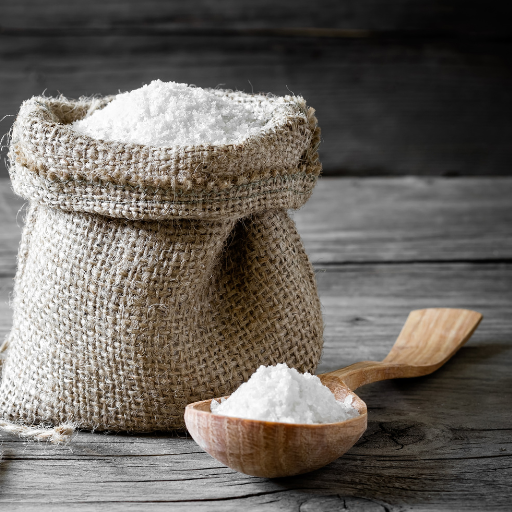
When used in the garden, Epsom salt has a lot of good things. First and foremost, it is a good source of magnesium that is an essential element for photosynthesis and chlorophyll formation. It also aids in the uptake of other important nutrients like nitrogen and phosphorus that enhances plant growth and productivity at large. The other component in Epsom salt is sulfate, which plays an essential role in the formation of proteins and enzymes in plants. Using Epsom salt can help increase seed germination and nutrient uptake, deter pests, and even enhance fruit-quality flavors. Properly applied, Epsom salt fertilizer will lead to healthier plants producing higher yields.
How does Magnesium from Epsom Salt Benefit Pepper Plants?
Magnesium from Epsom salt is crucial for growing pepper plants as it directly affects chlorophyll production. For instance, chlorophylls are necessary during photosynthesis and convert light into energy required by plants, leading to the healthy development of stronger ones. Furthermore, magnesium helps to facilitate the absorption of other major nutrients, such as nitrogen and phosphorus, needed for growth as well as fruiting. Gardeners who ensure their bell peppers have enough magnesium should expect better leaf coloration, more flowering periods resulting into improved fruit quality thus higher general yields.
What Role Does Sulfur in Epsom Salt Play for Pepper Plants?
Sulfur found in Epsom salt takes part in synthesizing amino acids required for protein biosynthesis within green pepper plant cells. These substances are vital catalysts facilitating various metabolic pathways involving enzyme actions. Additionally sulfur helps synthesize chlorophylls used in photosynthetic processes while promoting resistance against diseases thereby making sure that capsicum annuum varieties grow vigorously with high-quality fruits always produced at maturity stage
How Much Epsom Salt Should I Use for Pepper Plants?
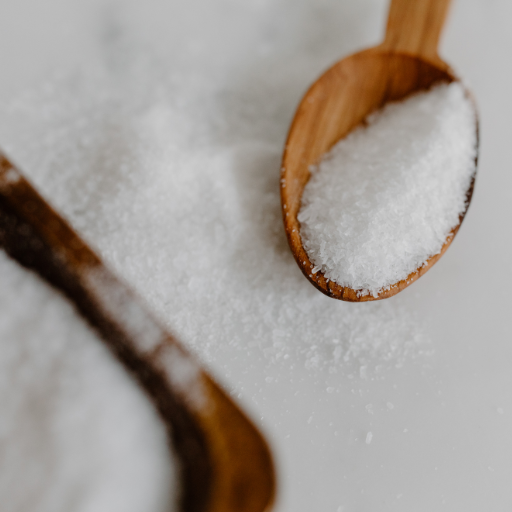
Normally, a recommended dosage of Epsom salt for pepper plants is one to two tablespoons for every gallon of water either as foliar spray or soil drench. This should be done once every month during the growing season for optimal yields. Additional incorporation of a teaspoon of Epsom salts into the soil near the base of each plant at planting helps to ensure vigorous early growth of peppers. Over-application should be avoided since too much magnesium can hinder the absorption of other key nutrients.
How Many Tablespoons of Epsom Salt per Gallon of Water Should I Use?
The recommended amount ranges between 1 and 2 tablespoons per gallon. This quantity can be used in both foliar and root application methods. The solution is normally added at least once every 30 days to improve plant health and productivity. Following these rules prevents any nutritional imbalances that may arise, leading to lacklustre growth.
What is the Recommended Dosage of Epsom Salt for Pepper Plants?
From some authoritative websites, there exists a guideline about how much Epsom salt should be used on pepper plants based on which you can make your choice:
- General Application Rate: One to two tablespoons of Epsom salt per gallon of water. It works well when applied as either leaf spray or soil drenching. Once per month during growing seasons it helps maintain good health and increase fruit production.
- Initial Soil Preparation: When transplanting young pepper seedlings, it is advisable to mix one teaspoonful of Epsom salts with soil around each plant’s bottom end to enhance early life processes. Thus, magnesium will be provided right from the start, and fast development will take place through sturdy underground parts.
- Application Frequency: The easiest way to develop crops properly if to pour this solution onto them at least once within 30 days period. Such regular dosages also ensure a continuous supply of minerals essential for correct workability.
To avoid nutrient imbalances especially in magnesium, which can interfere with the uptake of other nutrients such as calcium and potassium, it is important to follow recommended dosages strictly. These guidelines are from many sources and generally agreed upon on how Epsom salt should be used when growing pepper plants.
Is Epsom Salt Safe for All Types of Peppers?
In general, farmers consider Epsom salt safe for all forms of peppers including sweet and hot types. This is because its major component—magnesium sulfate—is essential in photosynthesis as well as promoting the intake of other vital nutrients that are necessary across diverse species of peppers. However, individual plant responses will always differ hence it is important to use the right amounts of Epson salts so that they are not overused leading to nutritional imbalance or toxicity issues. Therefore, in order to ensure safe application of Epson salts on a wide range of pepper varieties one should consult local agricultural manuals or perform soil testing for their type.
When and How Often Should Epsom Salt be Applied to Pepper Plants?
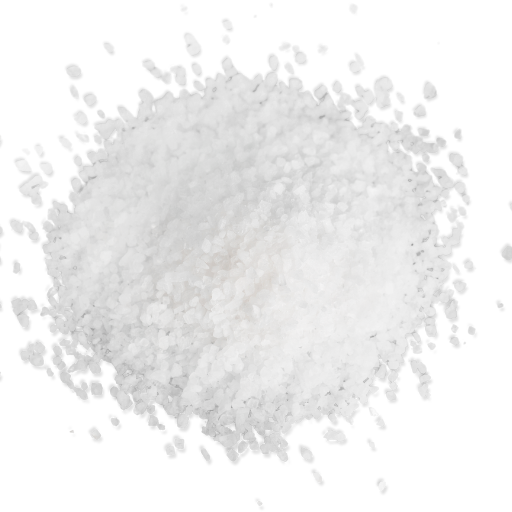
The best time to add Epsom salt to pepper plants is during the growing period, specifically when the plants lack magnesium, like its deficiency has attracted yellowing between the veins on leaves. The first application can be done at planting, and it should be followed by other applications every four to six weeks throughout the growing season. Generally, about one tablespoon of Epsom salt should dissolve in a gallon of water, and this solution can be used to water plants because it will make magnesium readily available for root systems. Monitoring regularly and adjusting their health as well as growth conditions may help in achieving desirable results.
Best Times for Applying Epson Salt in Vegetable Garden
Specific times within vegetable garden windows warrant Epsom salts use. First, it can happen during planting season with an inclusion of one tablespoon of Epsom salt per hole, which stimulates a healthy rooting system and nutrient uptake right from the start. Secondly, towards the end of the planting season, where cases like yellowing leaves with green veins indicate a lack of magnesium, another opportunity comes up for adding Epsom salt. Spraying foliage or drenching soil twice every month using a mixture of one tablespoon fulls dissolved in a gallon of water will give good results. In addition, just before harvest, it is advisable to apply some so as to improve the taste and overall healthiness of the vegetables grown. At all times, however, dosage and frequency are crucial elements that need consideration so as not to go beyond recommended levels, hence causing oversupply and eventual imbalance of nutrients. This way people can get more information through regular soil tests done by agronomists or others working closely with them.
Rate of Application Epsom Salt on Pepper Plants
Typically pepper plants are supposed to receive Epsom salt every fortnight while they are growing. Besides dissolving one tablespoonful in a gallon of water that is meant for foliar spraying, there’s an option that involves placing them right into the ground about each plant. This two-week program prevents magnesium deficiency, which is vital for photosynthesis and the general well-being of a plant. Regular checking if leaves are becoming yellow and not longer green, indicating a lack of magnesium, can make an individual decide on how to change this schedule by ensuring maximum growth and fruiting.
Does Epsom Salt Work All The Time or At A Certain Stage During Growth?
Epsom salt can be used on pepper plants throughout the growing season, but its application must consider specific stages of growth. In the early stages, applying bi-weekly helps establish good root development as well as foliage health. Its continued use during maturity of plants at flowering stage ensures sufficient magnesium supply that is required in photosynthesis for fruits formation. However, when used excessively, it causes nutrient imbalances; hence, observing an occasional soil test with reference to these symptoms is highly recommended, after which a rate should be fine-tuned accordingly. Application of Epsom salt both as soil amendment and foliar spray will promote uptake of magnesium at different stages of growth thereby enhancing overall productivity and health in plants.
How Do You Apply Epsom Salt to Pepper Plants?
To use Epsom salt on pepper plants, one generally has two methods: soil enrichment and leaf spraying. Soil application of this salt is done by mixing a tablespoonful of it with the soil around the root base of each plant. This should be repeated every fortnight throughout the growth period to stop magnesium deficiency and encourage good health. The foliar application involves dissolving a tablespoonful of Epsom salt in the water that fills a one-gallon container, Where after that, you should spray it on the plants. The latter makes it easier for magnesium to be absorbed into leaves rather than any other part, hence its importance, with yellowing leaves having green veins due to the likely deficiency that could occur later on. It is necessary to keep an eye on these plants and alter their use when required so that there is no over-manuring or nutrient imbalance occurring in them. Regular soil tests can also help establish how often and how much should be applied into soil.
Methods to Apply Epsom Salt: Soil vs. Foliar Spray
Both methods have distinct advantages and technical parameters to consider when comparing soil application to foliar spray for Epsom salt.
Soil Application
- Ease of Use: Soil application incorporates Epsom salt directly into the soil. Typically, one tablespoon of Epsom salt is mixed into the soil around the base of each pepper plant every two weeks.
- Absorption Rate: Magnesium is absorbed through the root system, which can be slower but provides sustained nutrient availability.
- Technical Parameters: Regular soil tests are advisable to monitor magnesium levels and soil pH. Over-application can lead to nutrient imbalances, particularly with calcium and potassium.
Foliar Spray
- Ease of Use: Foliar spray involves dissolving one tablespoon of Epsom salt in a gallon of water and spraying it on the leaves of the plants.
- Absorption Rate: This method allows for quicker magnesium absorption through the leaves, benefiting plants with deficiency symptoms such as chlorosis (yellowing leaves with green veins).
- Technical Parameters: Spraying should be done early in the morning or late afternoon to avoid leaf burns from the sun. Ensure the solution is evenly distributed for maximum absorption. Regular monitoring of leaf health can help determine the efficacy of this method.
Each method has its own set of advantages. Soil application benefits long-term nutrient management, while foliar spray provides an immediate remedy for deficiencies. Balancing both methods, guided by regular plant observations and soil tests, ensures optimal health and productivity of pepper plants.
Using Tank Sprayers for Epsom Salt Foliar Application
Utilizing tank sprayers on pepper plants is an effective way of applying Epsom salt foliar sprays? That being said, these sprayers provide an excellent coverage. The solution should be made by dissolving one tablespoon of Epsom salts in a gallon of water and ensuring it is well-mixed? Then the solution should be filled in the tank sprayer. With that, select fine mist settings to maximize leaf coverage while minimizing runoff? Application must be done early in the morning or late in the evening when direct sunlight is not so strong to cause leaf burns. Regular calibrations and maintenance of sprayers are necessary for maintaining uniform spray patterns and avoiding clogs. In this regard, always monitor plant health during foliar application and make adjustments based on visual indicators and soil tests as necessary to ensure optimal nutrient uptake.
How to Measure Epsom Salt for Accurate Application
Epsom salt should be accurately measured for it to effectively work on the pepper plants. Start by using a tablespoon or an electronic scale to measure Epsom salts. Dissolve one tablespoon (approximately 15 grams) of Epsom salts in a gallon of water for foliar applications. If you choose electronic scales, first put a clean container in and instead of that reset the weight to zero prior putting in Epsom salts. Check the measurements again so as to ascertain accuracy since performance of this treatment totally depends on proper concentrations. Properly labeled and stored, this can prevent contamination and give consistent results next time we apply it.
Common Questions and Troubleshooting Using Epsom Salt for Plants
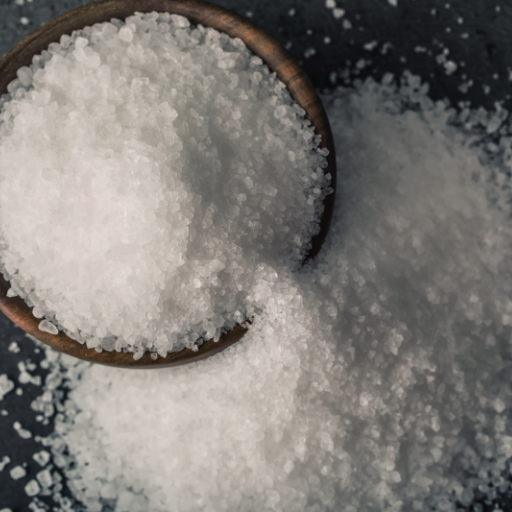
The question is whether Epsom salt can be overapplied to plants. Overapplication can cause an oversupply of magnesium or sulfur, which may interfere with nutrient uptake and upset the balance in the soil. Follow the recommended dosage and application frequency, and check on soil conditions regularly.
Another issue is what are the visible signs that Epsom salt is working? Improved leaf coloration, better growth, and a general healthier condition of plants are all positive signs. However, if no change occurs, it is important to test soil pH and nutrient levels to ascertain whether it might be a magnesium deficiency.
Lastly, some gardeners want to know whether Epsom salts work well with other types of fertilizers. Generally speaking, its safe to combine epsom salt with most fertilizers but one has to follow the specific product guidelines in order to avoid any excesses. By mixing them together in correct ratio ensures that plants receive important nutrients in balanced amounts.
What If I Add Too Much Epsom Salt?
Excessive application of Epsom salt on plants could have several negative effects. The main problem is magnesium toxicity; this can block the supply of essential elements like calcium and potassium. Signs for this disease include leaves turning yellow in color as well as stunted growth also possible root damage may occur.
Adverse Effects of Excessive Epsom Salt:
- Magnesium Toxicity:
-
- Symptoms: Yellowing leaves (chlorosis), stunted growth.
- Impact: Inhibits the uptake of calcium and potassium.
- Soil Imbalance:
-
- Symptoms: Altered soil pH, accumulation of salts.
- Impact: Disrupts the equilibrium of soil nutrients.
- Root Damage:
-
- Symptoms: Brown or blackened roots, poor root health.
- Impact: Reduced water and nutrient absorption.
To mitigate these issues, flushing the soil with water to leach out the excess magnesium sulfate is essential. Additionally, regularly monitoring soil pH and nutrient levels can help prevent overapplication. In severe imbalance, soil amendment with organic matter or appropriate fertilizers might be necessary to restore nutrient equilibrium.
Indicators of Magnesium Lack in Pepper Plants
Deficiency of magnesium is a very common problem in pepper plants, and it can lead to serious damages to the plant health and yield. Most important signs include interveinal chlorosis where the tissue between the veins turns yellow while veins remain green. In such cases, it normally starts with older leaves and spreads if there is no curbing for this deficiency. Another one is leaf curling whereby leaves may begin curling upwards or become fragile. Growth may be stunted, leading to dwarfed plants with fewer fruits.
For an accurate diagnosis of magnesium deficiency, it is essential to conduct a soil test in order to find out the levels of magnesium. For peppers, a good range is about 25-50 parts per million (ppm) of soil magnesium content. Apart from that, maintaining the pH level of soil between 6.0 and 6.5 helps in getting optimal nutrient uptake by plants growing on it as well as other crops under similar conditions. In case deficiencies have been confirmed, Magnesium Sulfate (Epsom salt) can be applied as a soil amendment. Applying 1-2 tablespoons of Epsom salt per gallon of water once every month is advisable. This solution is used for watering plants until symptoms subside.
Regular soil testing, together with the right fertilization practices, will help avoid magnesium deficiencies, promoting healthy growth for pepper plants.
Can Epsom Salt Be Mixed With Other Fertilizers?
Yes, you can mix Epsom salt with other fertilizers because it contains magnesium and sulfur which are essential nutrients not present in conventional fertilizers; however, proper guidelines need to be followed when mixing Epsom salt with other types of fertilizer products: Generally balanced fertilizer plus Epsom salt provides comprehensive nutrient boost without any negative interactions among them associated with such combination; It’s suggested that you dissolve 1-2 tablespoons of Epsom salt in a gallon of water and use this solution along with general purpose fertilizer; This blend can enhance nutrient availability as well as improve plant health, but care should be taken not to over-fertilize thereby unsettling the nutrient balance or burning the plants. It’s important to monitor soil nutrient levels through regular testing to ensure that optimum conditions for plant growth are maintained.
Can Epsom Salt be Used for Other Plants in the Garden?
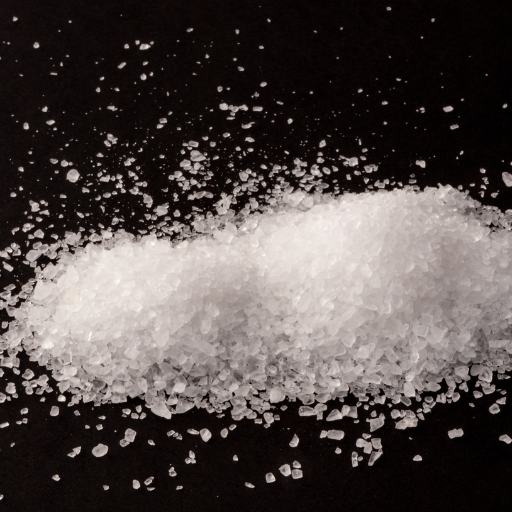
Pepper is not the only plant in the garden that can benefit from Epsom salt among other things. For instance, tomato plants often do well with magnesium found in epsom salt because it may reduce chances of blossom-end rot due to lack of magnesium. Roses too benefit greatly with using Epsom salt as a nutritional supplement for healthy blooms and strong stems. Moreover, Epsom salts can be applied on ornamentals, fruit trees and vegetables to improve overall nutrient uptake. It is very important, though, that when using Epsom salts for different plants, we must observe particular rates of application specific to each type of plant that typically calls for 1 tablespoon per gallon of water and should be used once every month. To ensure balanced nutrition, other nutrient levels are checked during routine soil testing.
Is Epsom Salt Effective for Tomato Plants?
Tomatoes have been widely said to benefit from epsom salt majorly due to their high magnesium content which is necessary for chlorophyll synthesis and absorption of nutrients. Many people claim healthier crops and better yields after applying this substance because it prevents blossom end rot, which occurs when a lack of magnesium element brings about calcium uptake problems. Use 1 tablespoonful into a gallon of water as a foliar spray or soil treatment every fortnight throughout the growing season (Grubinger). However, one must be aware that despite being able to provide supplementary amounts of magnesium sulphate, excess use would lead to abnormal nutrient ratios rather than spinning the dials on your yield graph.
Benefits of Epsom Salt for Various Vegetable Garden Plants
Some vegetable garden plants require supplementation with Epsom salt due to its composition rich in sulfur and magnesium. This mineral is vital in photosynthesis since it activates enzymes performing different processes in green leafy vegetables such as lettuce, spinach thus they manifest good health and increased production potential (Pereira). This also applies significantly in tomatoes and peppers where the salt helps prevent blossom end rot and can lead to increased fruit production due to optimal nutrient absorption. Root vegetables like carrots and radishes benefit from the strength of the cell walls provided by magnesium, which leads to healthier growth. The application of Epsom salt is typically done on a plant-by-plant basis using a solution of 1 tablespoon per gallon of water applied as either foliage or soil spray every couple of weeks during the growing season.
Compatibility of Epsom Salt with Different Soil Types
Epsom salt is generally compatible with most types of soils but its activity may vary depending on what nutrients are already present in it (Grubinger). It acts fairly quickly in sandy soils where essential nutrients are scarce by alleviating magnesium deficiencies for better plant development. Loamy soils, too, have balanced minerals, though they still require the occasional addition of Epsom salt for optimum photosynthesis and enzyme activities across different plants. Conversely, clayey soils that retain nutrients may see less dramatic improvement but still benefit from some careful application leading to better plant health care than before. Prior to using epsom salts, soil should be tested to ascertain its nutrient status thus ensuring good garden fertilization practice through tailored supplementation for balanced provision.
Frequently Asked Questions (FAQs)
Q: How much Epsom salt should I use for pepper plants?
A: For pepper plants, it’s recommended to add one tablespoon of ultra Epsom salt per foot of plant height around the base. This can help improve nutrient absorption and overall plant health.
Q: Can I use Epsom salt for tomatoes and peppers together?
A: Yes, you can use Epsom salt for tomatoes and peppers together. A standard practice is to add one or two tablespoons of ultra Epsom salt per plant, ensuring to distribute it evenly around the base for optimal results.
Q: How does Epsom salt help pepper plants?
A: Epsom salt helps pepper plants by supplying magnesium, which is crucial for plant cell walls and overall growth. This natural mineral improves nutrient uptake, leading to healthier and more productive plants.
Q: Is Epsom salt a natural mineral?
A: Yes, Epsom salt is a natural mineral composed of magnesium sulfate. It is commonly used in gardening to improve soil fertility and plant health, especially for crops like tomato and pepper plants.
Q: How often should I apply Epsom salt to my tomato and pepper plants?
A: For optimal results, you can apply Epsom salt to your tomato and pepper plants once every four to six weeks. A regular application schedule ensures consistent magnesium supply and promotes vigorous growth.
Q: Can too much Epsom salt harm my plants?
A: Yes, excessive use of Epsom salt can harm plants by causing nutrient imbalances in the soil. It’s important to follow recommended dosages, such as one tablespoon of ultra Epsom salt per foot of plant height, to prevent potential damage.
Q: Can I use Epsom salt as a soil amendment for tomatoes and peppers?
A: Yes, Epsom salt is an effective soil amendment for tomatoes and peppers. It can be mixed into the soil before planting or used as a top dressing to improve soil fertility and provide essential magnesium to the plants.
Q: What is the recommended dosage of Epsom salt per foot of plant height for tomato and pepper plants?
A: The recommended dosage of Epsom salt per foot of plant height for tomato and pepper plants is one tablespoon. This ensures an adequate supply of magnesium for optimal plant growth and health.






